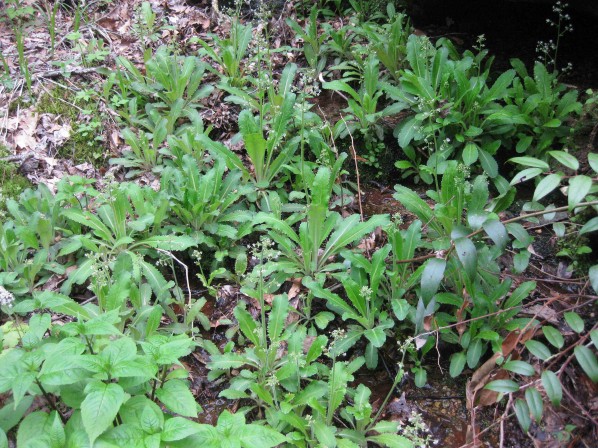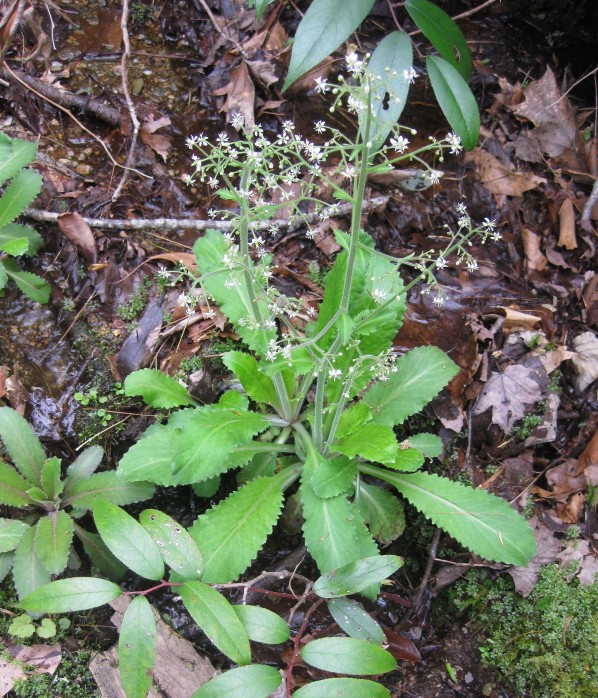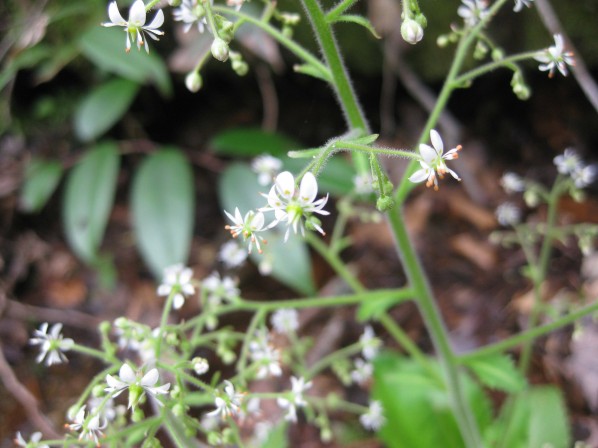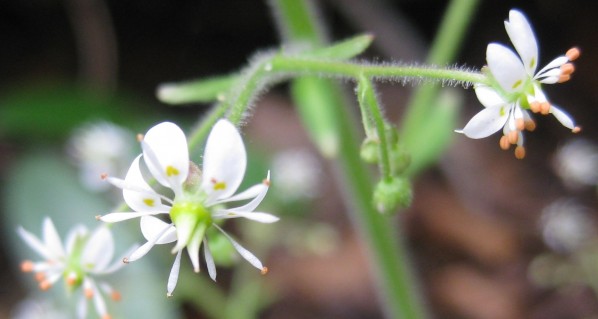NC Native Plant Society:
Plant Details
Micranthes micranthidifolia [= Saxifraga micranthidifolia]
Branch-lettuce, Brook Lettuce, Mountain Lettuce, Lettuceleaf Saxifrage
Scientific Name: |
Micranthes micranthidifolia [= Saxifraga micranthidifolia] |
|---|---|
Genus: |
Micranthes |
Species Epithet: |
micranthidifolia |
Common Name: |
Branch-lettuce, Brook Lettuce, Mountain Lettuce, Lettuceleaf Saxifrage |
Plant Type |
Herb/Wildflower |
Life Cycle |
Perennial |
Plant Family |
Saxifragaceae (Saxifrage Family) |
Native/Alien: |
NC Native |
Size: |
1-3 ft. |
Bloom Color(s): |
White |
Light: |
Sun - 6 or more hours of sun per day, Part Shade - 2 to 6 hours of sun per day |
Soil Moisture: |
Wet |
Bloom Time: |
May, June |
Growing Area: |
Mountains, Piedmont |
Habitat Description: |
Wet soils of seepages, in the beds of high elevation brooks, brookbanks; rocky seepages. A Southern and Central Appalachian endemic (Weakley 2015). Common in NC Mountains, rare in Piedmont. |
Leaf Arrangement: |
Basal |
Leaf Retention: |
Evergreen |
Leaf Type: |
Leaves veined, not needle-like or scale-like |
Leaf Form: |
Simple |
Life Cycle: |
Perennial |
Wildlife Value: |
Has some wildlife value |
Landscape Value: |
Not Recommended for home landscapes |
State Rank: |
S3: Vulnerable (*Key) |
Global Rank: |
G5 - Secure (*Key) |
State Status: |
W6: Watch List: Regionally Rare (*Key) |
Notes: |
"Micranthes micranthidifolia (formerly Saxifraga micranthidifolia). This plant is gathered in considerable quantities as a spring green in the mountains of our area, and can sometimes be seen for sale in local grocery stores. The common name refers to the plant's habitat; "branches" are mountain streams." Weakley 2015 |
|
Habitat mountain weeps Tom Harville |
|
|
Plant Tom Harville |
|
|
Blooms Tom Harville |
|
|
Blooms Close up Tom Harville |
|
Links: |
|
back to top
go to plant details search
go to plant images search
go to gallery home
back to Initial m Gallery
back to orchids
back to Carnivorous Plants
back to Trilliums







